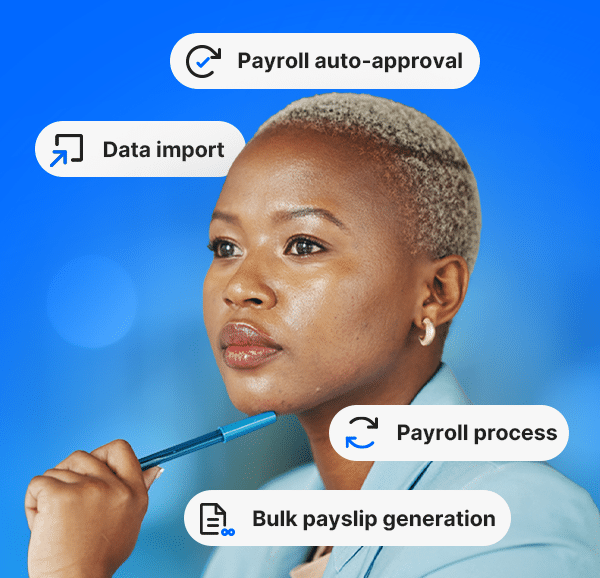Responsible for ensuring the entire global workforce is paid accurately, on-time, and without issue, the role of the global payroll leader is both demanding and rewarding in equal measure.
It’s a challenging, all-encompassing role, typically supporting employees across many cities and countries by managing all aspects of payroll service and delivery.
And like many leadership roles, it’s being continually redefined by evolving technology. Today’s leaders are responsible not just for leveraging these advances to shape global payroll strategy, but also to drive its implementation and adoption.
In this article, we’ll look at some of the key responsibilities and challenges of today’s global payroll leader, and identify the core skills required to excel in this role. We’ll also look at the personal demands of a job that typically sees those in the post racking up the air miles.
The challenges facing today’s global payroll leader
Whether it’s consolidating global operations, rolling out a new country, or integrating with a HCM solution, the primary goal of a payroll organization will dictate the challenges faced by payroll leaders. For example, when spearheading a global payroll implementation, the main challenge may well be overcoming resistance to change.
As with any transformation project, the reimagination of payroll is likely to encounter push-back from different areas and regions of your organization. Often this will come predominantly from local payroll teams and regional managers who may be reluctant to move away from their current approach.
However, the challenges of the global payroll leader role extend far beyond resistance to change. They must navigate a complex environment on a day-to-day basis, often coordinating multiple different third-party vendors and remote or virtual teams as part of your global network.
They are also tasked with leading, inspiring, and motivating a diverse, multicultural global payroll team. One of the most important elements to succeeding in global payroll is developing cultural awareness. The ability to effectively communicate and collaborate with team members from various countries and regions cannot be underestimated.
Keeping up-to-date with technology advances in payroll is another key part of the role — and that’s no mean feat in a technological space that’s moving faster than ever.
No sooner have cloud payroll platforms crossed over into the mainstream, than blockchain and machine learning are already making their presence felt in the HR and payroll arena, pushing capabilities even further forward.
It’s the payroll leader’s role to keep the payroll function at the cutting edge of what’s possible, in a world where employee experience is paramount to the success of the organization.
The skills required to meet those challenges
While no two global payroll leader job descriptions will ever be the same, there are plenty of commonalities in terms of the skills and experience required to navigate the challenges of the role.
A strong operational background is a given, with experience in leading high-volume payroll processing. You’ll need exceptional communication skills across different online and offline channels too, with the ability to build stakeholder relationships at all levels and across multiple departments including payroll, HR, and finance.
Emotional intelligence and the ability to influence will be key — not just to drive change internally, but to manage and negotiate with third-party vendors. As any payroll professional knows, the ability to meet deadlines under pressure is also a must.
Most roles will require knowledge and experience of working with payroll software and how it integrates with HR platforms, such as Workday. The ability to analyze payroll data is another increasingly important skill, not only to improve payroll operations but also to inform the wider business when making decisions in areas such as hiring practices and employee retention.
Objectives and priorities for payroll leaders
While many people in this role are first hired or promoted to lead an implementation project, the wider objective of every payroll lead is the continuous improvement of the global payroll function.
This improvement can come in many forms, from reducing costs and improving efficiency to strengthening risks and controls, as well as improving compliance through better management of localized in-country regulations.
In the spirit of continuous improvement, it’s incumbent on the payroll leader to proactively capture requirements from each region for potential enhancements to technology and process. At the same time, proactive leaders must analyze market trends and benchmark their performance to bring innovation and best practice to the payroll function.
Embedding best practice and standardization across payroll operations also means ensuring everyone works to common KPIs. This means analyzing these metrics on an ongoing basis to monitor and enhance performance.
Internal promotion of the global payroll function should also be on the agenda, as the leading representative of the payroll domain within an organization.
The personal demands on a payroll leader
From even a brief look at the challenges, objectives, and priorities of today’s payroll leaders, it’s clear that this is a highly demanding role.
Any payroll professional will be used to running with a hectic schedule, but the global nature of the leadership role brings its own unique challenges — not least dealing with teams and vendors across multiple time zones.
Conference calls at 5 am or late at night are a challenge to anyone’s work-life balance. The leadership role naturally demands a significant amount of global travel too.
For those who relish the chance to see the world and engage with its many work cultures, however, few jobs can beat the global payroll lead — a role that impacts significantly on every employee across the global business.




